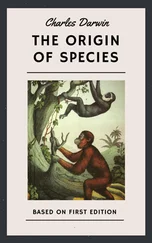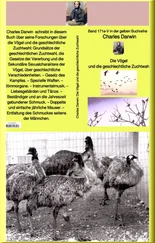Charles Darwin - Insectivorous Plants
Здесь есть возможность читать онлайн «Charles Darwin - Insectivorous Plants» — ознакомительный отрывок электронной книги совершенно бесплатно, а после прочтения отрывка купить полную версию. В некоторых случаях можно слушать аудио, скачать через торрент в формате fb2 и присутствует краткое содержание. Жанр: foreign_antique, foreign_prose, на английском языке. Описание произведения, (предисловие) а так же отзывы посетителей доступны на портале библиотеки ЛибКат.
- Название:Insectivorous Plants
- Автор:
- Жанр:
- Год:неизвестен
- ISBN:нет данных
- Рейтинг книги:5 / 5. Голосов: 1
-
Избранное:Добавить в избранное
- Отзывы:
-
Ваша оценка:
- 100
- 1
- 2
- 3
- 4
- 5
Insectivorous Plants: краткое содержание, описание и аннотация
Предлагаем к чтению аннотацию, описание, краткое содержание или предисловие (зависит от того, что написал сам автор книги «Insectivorous Plants»). Если вы не нашли необходимую информацию о книге — напишите в комментариях, мы постараемся отыскать её.
Insectivorous Plants — читать онлайн ознакомительный отрывок
Ниже представлен текст книги, разбитый по страницам. Система сохранения места последней прочитанной страницы, позволяет с удобством читать онлайн бесплатно книгу «Insectivorous Plants», без необходимости каждый раз заново искать на чём Вы остановились. Поставьте закладку, и сможете в любой момент перейти на страницу, на которой закончили чтение.
Интервал:
Закладка:
Experiment 4. – Similar bits of fibrin were placed on the discs of two leaves; as after 2 hrs. the glands seemed rather dry, they were freely moistened with saliva; this soon caused strong inflection both of the tentacles and blades, with copious secretion from the glands. In 18 hrs. the fibrin was completely liquefied, but undigested atoms still floated in the liquid; these, however, disappeared in under two additional days.]
From these experiments it is clear that the secretion completely dissolves pure fibrin. The rate of dissolution is rather slow; but this depends merely on this substance not exciting the leaves sufficiently, so that only the immediately adjoining tentacles are inflected, and the supply of secretion is small.
Syntonin. – This substance, extracted from muscle, was kindly prepared for me by Dr. Moore. Very differently from fibrin, it acts quickly and energetically. Small portions placed on the discs of three leaves caused their tentacles and blades to be strongly inflected within 8 hrs.; but no further observations were made. It is probably due to the presence of this substance that raw meat is too powerful a stimulant, often injuring or even killing the leaves.
Areolar Tissue. – Small portions of this tissue from a sheep were placed on the discs of three leaves; these became moderately well inflected in 24 hrs., but began to re-expand after 48 hrs., and were fully re-expanded in 72 hrs., always reckoning from the time when the bits were first given. This substance, therefore, like fibrin, excites the leaves for only a short time. The residue left on the leaves, after they were fully re-expanded, was examined under a high power and found much altered, but, owing to the presence of a quantity of elastic tissue, which is never acted on, could hardly be said to be in a liquefied condition.
Some areolar tissue free from elastic tissue was next procured from the visceral cavity of a toad, and moderately sized, as well as very small, bits were placed on five leaves. After 24 hrs. two of the bits were completely liquefied; two others were rendered transparent, but not quite liquefied; whilst the fifth was but little affected. Several glands on the three latter leaves were now moistened with a little saliva, which soon caused much inflection and secretion, with the result that in the course of 12 additional hrs. one leaf alone showed a remnant of undigested tissue. On the discs of the four other leaves (to one of which a rather large bit had been given) nothing was left except some transparent viscid fluid. I may add that some of this tissue included points of black pigment, and these were not at all affected. As a control experiment, small portions of this tissue were left in water and on wet moss for the same length of time, and remained white and opaque. From these facts it is clear that areolar tissue is easily and quickly digested by the secretion; but that it does not greatly excite the leaves.
Cartilage. – Three cubes (1/20 of an inch or 1.27 mm.) of white, translucent, extremely tough cartilage were cut from the end of a slightly roasted leg-bone of a sheep. These were placed on three leaves, borne by poor, small plants in my greenhouse during November; and it seemed in the highest degree improbable that so hard a substance would be digested under such unfavourable circumstances. Nevertheless, after 48 hrs., the cubes were largely dissolved and converted into minute spheres, surrounded by transparent, very acid fluid. Two of these spheres were completely softened to their centres; whilst the third still contained a very small irregularly shaped core of solid cartilage. Their surfaces were seen under the microscope to be curiously marked by prominent ridges, showing that the cartilage had been unequally corroded by the secretion. I need hardly say that cubes of the same cartilage, kept in water for the same length of time, were not in the least affected.
During a more favourable season, moderately sized bits of the skinned ear of a cat, which includes cartilage, areolar and elastic tissue, were placed on three leaves. Some of the glands were touched with saliva, which caused prompt inflection. Two of the leaves began to re-expand after three days, and the third on the fifth day. The fluid residue left on their discs was now examined, and consisted in one case of perfectly transparent, viscid matter; in the other two cases, it contained some elastic tissue and apparently remnants of half digested areolar tissue.
Fibro-cartilage (from between the vertebrae of the tail of a sheep). Moderately sized and small bits (the latter about 1/20 of an inch) were placed on nine leaves. Some of these were well and some very little inflected. In the latter case the bits were dragged over the discs, so that they were well bedaubed with the secretion, and many glands thus irritated. All the leaves re-expanded after only two days; so that they were but little excited by this substance. The bits were not liquefied, but were certainly in an altered condition, being swollen, much more transparent, and so tender as to disintegrate very easily. My son Francis prepared some artificial gastric juice, which was proved efficient by quickly dissolving fibrin, and suspended portions of the fibro-cartilage in it. These swelled and became hyaline, exactly like those exposed to the secretion of Drosera, but were not dissolved. This result surprised me much, as two physiologists were of opinion that fibro-cartilage would be easily digested by gastric juice. I therefore asked Dr. Klein to examine the specimens; and he reports that the two which had been subjected to artificial gastric juice were "in that state of digestion in which we find connective tissue when treated with an acid, viz. swollen, more or less hyaline, the fibrillar bundles having become homogeneous and lost their fibrillar structure." In the specimens which had been left on the leaves of Drosera, until they re-expanded, "parts were altered, though only slightly so, in the same manner as those subjected to the gastric juice as they had become more transparent, almost hyaline, with the fibrillation of the bundles indistinct." Fibro-cartilage is therefore acted on in nearly the same manner by gastric juice and by the secretion of Drosera.
Bone. – Small smooth bits of the dried hyoidal bone of a fowl moistened with saliva were placed on two leaves, and a similarly moistened splinter of an extremely hard, broiled mutton-chop bone on a third leaf. These leaves soon became strongly inflected, and remained so for an unusual length of time; namely, one leaf for ten and the other two for nine days. The bits of bone were surrounded all the time by acid secretion. When examined under a weak power, they were found quite softened, so that they were readily penetrated by a blunt needle, torn into fibres, or compressed. Dr. Klein was so kind as to make sections of both bones and examine them. He informs me that both presented the normal appearance of decalcified bone, with traces of the earthy salts occasionally left. The corpuscles with their processes were very distinct in most parts; but in some parts, especially near the periphery of the hyoidal bone, none could be seen. Other parts again appeared amorphous, with even the longitudinal striation of bone not distinguishable. This amorphous structure, as Dr. Klein thinks, may be the result either of the incipient digestion of the fibrous basis or of all the animal matter having been removed, the corpuscles being thus rendered invisible. A hard, brittle, yellowish substance occupied the position of the medulla in the fragments of the hyoidal bone.
As the angles and little projections of the fibrous basis were not in the least rounded or corroded, two of the bits were placed on fresh leaves. These by the next morning were closely inflected, and remained so, – the one for six and the other for seven days, – therefore for not so long a time as on the first occasion, but for a much longer time than ever occurs with leaves inflected over inorganic or even over many organic bodies. The secretion during the whole time coloured litmus paper of a bright red; but this may have been due to the presence of the acid super-phosphate of lime. When the leaves re-expanded, the angles and projections of the fibrous basis were as sharp as ever. I therefore concluded, falsely as we shall presently see, that the secretion cannot touch the fibrous basis of bone. The more probable explanation is that the acid was all consumed in decomposing the phosphate of lime which still remained; so that none was left in a free state to act in conjunction with the ferment on the fibrous basis.
Читать дальшеИнтервал:
Закладка:
Похожие книги на «Insectivorous Plants»
Представляем Вашему вниманию похожие книги на «Insectivorous Plants» списком для выбора. Мы отобрали схожую по названию и смыслу литературу в надежде предоставить читателям больше вариантов отыскать новые, интересные, ещё непрочитанные произведения.
Обсуждение, отзывы о книге «Insectivorous Plants» и просто собственные мнения читателей. Оставьте ваши комментарии, напишите, что Вы думаете о произведении, его смысле или главных героях. Укажите что конкретно понравилось, а что нет, и почему Вы так считаете.












